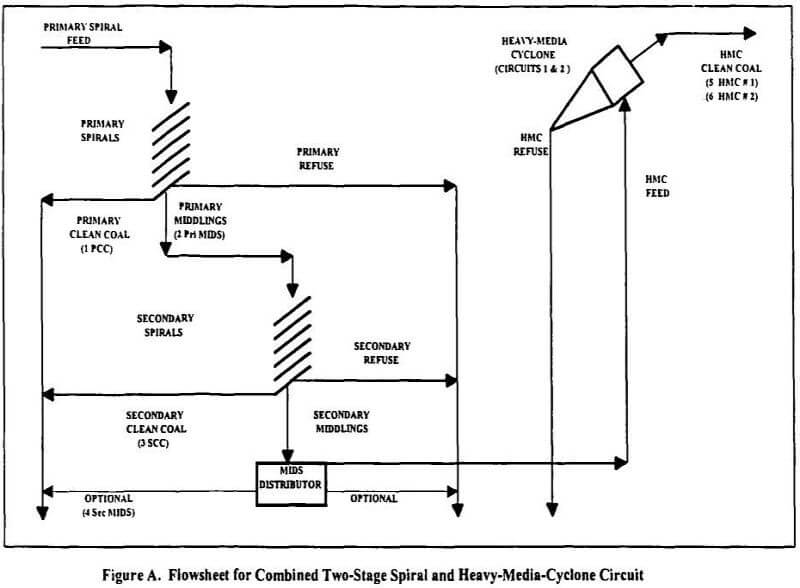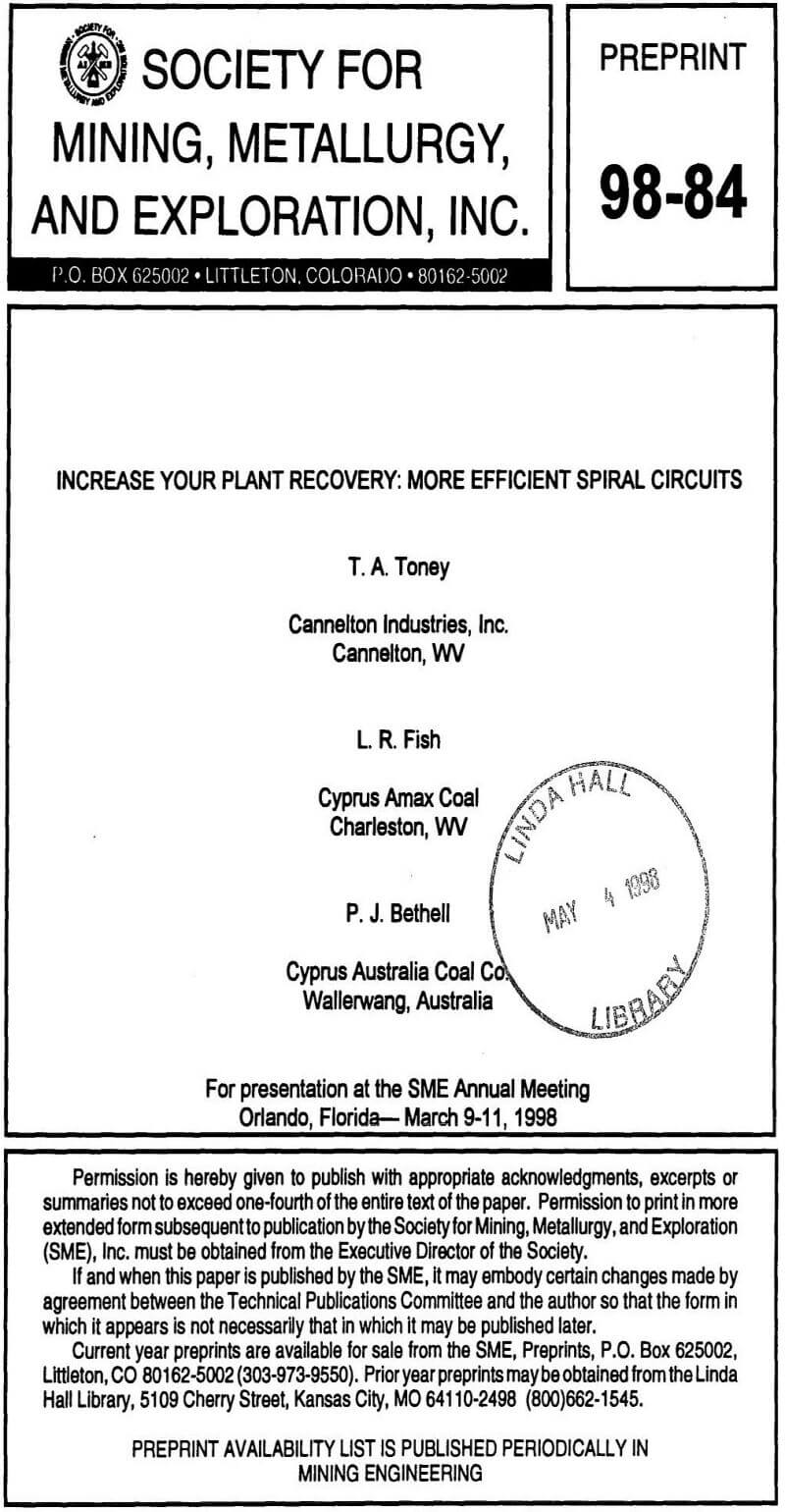The reasons spirals have become so popular are fairly simple. Spirals are low cost and effective. The new lightweight molded and coated fiberglass units mean low added floor weight which minimizes required support steel. Incorporating multiple starts greatly reduces the required floor space so that more tons per hour can be processed in less building space. Additionally, spirals are easy to operate and require minimal maintenance as long as the feed stream is properly sized and controlled. On the processing end, spirals effectively process a size range that simultaneously takes the fine-size fractions out of the heavy-media circuits and takes the coarse-size fractions out of the flotation circuit. This simplifies the desliming and media-recovery circuits and improves the flotation circuit because the flotation losses are typically highest in the coarsest sizes. Furthermore, spirals have no connected horsepower, and produce a reject that is low in carbon.
Spirals have few negative points. However, with all of the above attributes, some plant designers have attempted to stretch the application window to size ranges where spirals become less efficient. At the coarse-size end and at the fine-size end of the application window the spiral efficiency decreases and the separating gravity increases. Even in the ‘optimal size range” of 16 mesh x 60 mesh (1.18 mm x 250 micron) spirals exhibit high separating gravities. Additional spiral concerns are that their separating densities are feed-rate sensitive and coal losses are high when low-gravity separations are attempted.

To improve spiral performance while lowering cut point, primary-middlings retreatment in secondary spirals is becoming common place. This allows a low-gravity separation to be pursued on the primaries with coal losses minimized by middlings retreatment. This circuit also helps to control the product quality by dampening the affect of feed fluctuations. The net effect is a slightly lower cut point and an improved efficiency.
However, with the two-stage spiral circuit, a question remains as to how best to treat the secondary middlings. Simply taking the secondary middlings to clean coal increases the effective separating density while taking them to refuse increases coal losses. Another option to consider is to recirculate the secondary middlings to the primary feed. However, this would, at a minimum, increase the spiral load and, in turn, would increase the separating gravity. The secondary spiral middlings represents about 10 % of the primary spiral feed but compounds heavily in a recirculating loop.
Test work has been conducted around a two-stage spiral and heavy-media-cyclone rewash circuit. Under the conditions present during the tests, the following conclusions concerning the spiral and heavy-media circuits can be made.
- It is necessary to determine the net effect on plant yield when assessing a simultaneous improvement in quality and efficiency and a decrease in yield in one circuit
Spirals - Recovering the primary middlings to clean coal Vs. discarding the primary middlings to refuse results in an increased annual value.
- Rewashing the primary middlings in the secondary spirals Vs. discarding the primary middlings results in an increased annual value when secondary middlings are discarded.
- Recovering the secondary middlings to clean coal Vs. discarding the secondary middlings increases the product value.
Heavy-Media Cyclones - Rewashing the secondary-spiral middlings in the 28” (711 mm) heavy-media cyclones Vs. recovering the secondary middlings increases the annual value.
- As tested, the 1 meter heavy-media cyclone was not as efficient as the 28” (711 mm) heavy-media cyclones when processing the 16 mesh (1.18 mm) by 60 mesh (250 micron) material.
- Processing the raw 16 mesh (1.18 mm) by 60 mesh (250 micron) material in the 28” (711 mm) heavy-media-cyclone circuit shows the highest increased yield and value but adds concerns/ costs which may outpace the value.
- Using the secondary spirals on primary middlings and using the 28” (711 mm) heavy-media cyclones on secondary middlings Vs. discarding the primary middlings increases the value of coal recovered to product.

